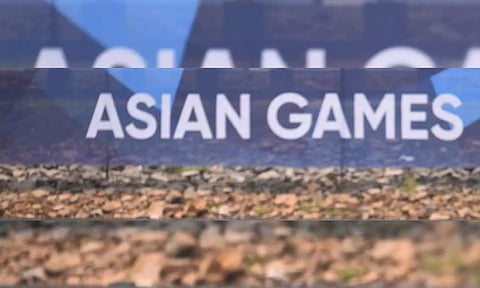

HANGZHOU: There’s an extra good reason why we must take delight in the success India has had at the Asian Games in Hangzhou, China. In recent years, we have been thrilled by the individual successes achieved by our star athletes like Neeraj Chopra or PV Sindhu.
But at Hangzhou, the whole crop of athletes fielded by India has done well in a plethora of sports. That is fulsome and satisfying. It is both a resonance of the soundness of our coaching programmes and proof of our promise in years to come.
The Asian Games success came with several superlatives. The final tally of 107 medals was our highest ever at the Asian Games, as were the 27 gold, 38 silver, and 41 bronze medals won.
It was the first time ever that India breached the 100 medal mark to take the fourth spot on the table in the company of sporting powerhouses China, Japan, and South Korea.
The medals won were spread over 22 disciplines, which speaks of the all-round progress made by India, as does the fact that they were almost equally contributed by men and women athletes.
Equally gratifyingly, India exhibited dominance in track and field athletics and shooting, which accounted for a whopping 29 and 22 medal placings, respectively.
This testifies to the depth of talent India has attained in select disciplines, which augurs well for our future performance in global competitions.
There were several breakthrough moments that portend India’s arrival as a sporting power. In javelin, we achieved a 1-2 with Neeraj Chopra and Kishore Kumar Jena taking the first two slots despite some questionable officiating.
The men’s hockey team swept the entire field with astonishing swagger, beating Pakistan 10-2 in its pool and Japan 5-1 in the final. In compound archery, the Indian team took all the five gold medals.
The performance at Hangzhou was also remarkable for two other aspects, body language and endurance, both signifying an assertion of the right to win. India’s athletes strutted around on the track looking like winners, and exhibited great character in adversity.
Parul Choudhury won the first ever gold for India in the 5000 m race with an electrifying acceleration in the last 25 metres. In the 110 m hurdles, Jyothi Yarraji protested vigorously after being unfairly called out for a false start and took the silver despite the loss of her nervous energy.
Annu Rani won the first women’s javelin gold for India with an almighty final throw after being well below her best until then. Unapologetic killer instinct is the hallmark of champions. Hangzhou saw Indian athletes make a massive passage from being game competitors to aggressive winners.
Several factors have contributed to this success, not the least of which is the Target Olympics Podium Scheme (TOPS) of the Sports
ity of India, which deploys financial and coaching resources to fine tune select athletes for peak performance at the right time. It’s a programme that puts athletes under the care of international coaches, performance specialists and nutrition consultants and exposes them to carefully curated international sports events.
This is not the conventional scattershot approach to promoting sporting excellence, which leaves the athlete to fend for himself or herself. India’s new approach is to streamline the whole process of producing champions, much like an industrial effort. It’s the way most advanced nations approach tournament success, and India has begun to get it right.